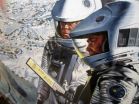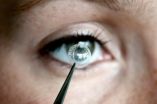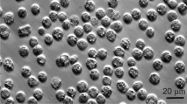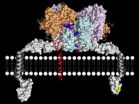(Press-News.org) A study at the University of Valencia ensures that science fiction, especially the cinema, is very popular amongst secondary school students and teachers see it as a good way of motivating interest in the sciences. However, out of the 31 textbooks analysed, only nine make some form of reference to science fiction cinema as a teaching resource.
"A current concern is that students are no longer studying science and engineering and this trend is more common amongst females. Science fiction can be useful in awaking the scientific vocation of younger students," as explained to SINC by Jordi Solbes Matarredona, researcher at the University of Valencia and coauthor of the study published in the 'Enseñanza de las Ciencias' journal.
The researchers Fanny Petit and Jordi Solbes gave a questionnaire to 173 students at four different state and grant-maintained schools in both rural and urban areas with the aim of understanding levels of science fiction knowledge and acceptance in schools. The experts obtained a total of 578 specific references to science fiction. The most important mentions by number were Stars Wars, with 90 visits, Matrix (60), X-Men (41), I Robot (36), Spiderman (32) and The Day after Tomorrow (24).
"In addition there were 78 references that demonstrated confusion between science fiction and magic, action and adventure, since the likes of Harry Potter and The Lord of the Rings were mentioned with 59 and 50 references respectively, along with the Neverending Story and Mission Impossible," outlines Solbes. Some of the classic genre films have hardly been mentioned. These include 2001, A Space Odyssey (with two mentions), Planet of the Apes (nine mentions) and Blade Runner (no mentions).
Some 24% of the answers gathered by the researchers value science fiction positively and 31% speak of advances in both science and technology. Furthermore, 47% had a positive outlook on scientists, 35% had a distorted or exaggerated outlook and 12% had an unfavourable outlook. As such, some comments towards scientists included "they are selfish", "they spend their life in the lab" upholding the typical image of the "crazy scientist" or "people who want to rule the world".
Scientists hardly make an appearance in the most popular films (Star Wars, Matrix) or they are portrayed in a negative way in superhero films (X-Men, Spiderman, Hulk). "In these films, the antagonist is usually the crazy scientist that wants to rule the world or even increase their power after finding a powerful 'weapon'," says the researcher.
Almost absent in books
The study also analyses the presence or lack of science fiction in 31 compulsory education and upper school science and technology textbooks for physics and chemistry, biology and geology and technology subjects along with teacher books, CD-ROMS and activity books. These texts came from seven of the main publishing houses between 2000 and 2008.
"Out of the 31 secondary and upper school books analysed, in 22 of them not one single reference to science fiction is made neither in photographs, comments, texts, activities or web references," states the researcher.
An element of science fiction was found in five of the books (either in the form of a photo, text and a problem-question), three books displayed evidence of two of these elements and just one book (Physics and Chemistry) contained all three science fiction elements.
"The most salient of these was a photograph of Superman found in one of the complimentary texts on the discovery of the mineral jadarite, whose chemical formula is very similar to that of the fictitious mineral kryptonite," explain the researchers.
They have also found a text book with an image of the starship Enterprise which accompanies a complementary text on the energy sources of ships and the distance problems that Captain Nemo could face on his underwater journey. Another problem found was the reference to the revolutions per minute that the space station from 2001, A Space Odyssey would need to undergo to simulate the Earth's gravity.
In Technology books an activity was found involving the design of a car in 2050, as well as a reference to the robotics laws of Isaac Asimov and another that mentions a science fiction cinema series with examples of films such as Matrix and Blade Runner.
"Since texts books make up the bulk of what it taught, this tells us that, along with the scarce number of activities proposed by teaching staff, science fiction is hardly present in the classroom despite it being viewed positively by teachers," conclude the researchers.
Teachers' opinions of it are positive yet it remains unused.
In addition to the study performed on students, a survey was also conducted on 35 teachers undertaking a PGCE equivalent and 21 fully qualified teachers. They were asked what science fiction they are familiar with, whether in cinema, television series or book format.
According to its results, references amongst this group to films in the Starwars saga are still predominant, and this is also the case for Back to the Future and Matrix. However, other classic films like Metrópolis, Blade Runner, 2001, A Space Odyssey and I Robot enjoy more references than in the younger group.
In general, the teaching staff mentioned books twice as much as the pupils, they clearly made more references to cinema and referred slightly more to series. "Some 38% of responses directly refer to improved motivation and more interest in sciences amongst pupils," points out Solbes.
In light of these results, the researchers propose learning activities based on science fiction films and series as a way of verifying if these activities do actually improve the image that students have of science and scientists.
INFORMATION:
References:
Mª Francisca Petit Pérez y Jordi Solbes Matarredona. "La ciencia ficción y la Enseñanza de las Ciencias", Enseñanza de las Ciencias, 30 (2): 69-86.
Science fiction is not put to good use in teaching
2012-10-04
ELSE PRESS RELEASES FROM THIS DATE:
Hi-fi single photons
2012-10-04
Many quantum technologies—such as cryptography, quantum computing and quantum networks—hinge on the use of single photons. While she was at the Kastler Brossel Laboratory (affiliated with the Pierre and Marie Curie University, École Normale Supérieure and CNRS) in Paris, France, Virginia d'Auria and her colleagues identified the extent to which photon detector characteristics shape the preparation of a photon source designed to reliably generate single photons. In a paper about to be published in EPJ D, the French team determined the value of key source parameters that ...
Lakes react differently to warmer climate
2012-10-04
The study in question has been carried out by a group of researchers at the Department of Biology at Lund University. The research team is specifically focusing on predictions regarding how our water resources will be like in the future, in terms of drinking water, recreation, fishing and biodiversity. They have now published findings on the impact of a warmer climate on lakes in the journal Nature Climate Change.
"The most interesting and unexpected result from the study is that the reaction to climate change will vary between lakes; this has been observed previously ...
Artificial cornea gives the gift of vision
2012-10-04
Our eyes are our window to the world. Thousands of people have lost their eyesight due to damages to the cornea, such as trauma, absent limbal stem cells or diseases. Transplantation of a donor cornea is the therapy of choice for a great number of those patients. Let alone the issue of scarce donor material, a sub-group of patients do not tolerate transplanted corneas, necessitating the employment of an alternative means of restoring eye sight. In Germany alone, around 7,000 patients are waiting to be treated. In close cooperation with the Aachen Centre of Technology ...
Researchers a step closer to controlling inflammation in MS
2012-10-04
A University of Adelaide researcher has published results that suggest a possible new mechanism to control multiple sclerosis (MS).
Dr Iain Comerford from the University's School of Molecular and Biomedical Science earned a three-year fellowship from MS Research Australia to work on this project. It is directed towards understanding how specific enzymes in cells of the immune system regulate immune cell activation and migration.
Along with his colleagues, Professor Shaun McColl and PhD students Wendel Litchfield and Ervin Kara, he focused on a molecule known as PI3Kgamma, ...
More certainty on uncertainty's quantum mechanical role
2012-10-04
WASHINGTON, Oct. 4—Scientists who study the ultra-small world of atoms know it is impossible to make certain simultaneous measurements, for example finding out both the location and momentum of an electron, with an arbitrarily high level of precision. Because measurements disturb the system, increased certainty in the first measurement leads to increased uncertainty in the second. The mathematics of this unintuitive concept – a hallmark of quantum mechanics – were first formulated by the famous physicist Werner Heisenberg at the beginning of the 20th century and became ...
VIMS researchers unravel life cycle of blue-crab parasite
2012-10-04
Professor Jeff Shields and colleagues at the Virginia Institute of Marine Science have succeeded in their 15-year effort to unravel the life history of Hematodinium, a single-celled parasite that afflicts blue crabs and is of growing concern to aquaculture operations and wild fisheries around the world.
Knowledge of the parasite's complex life cycle—gained by rearing of successive generations across a full year in a VIMS laboratory—will help guide efforts to understand the transmission of Hematodinium within crab populations and shrimp farms, and to develop best practices ...
Fox squirrels show long-term investment savvy when hoarding nuts
2012-10-04
Researchers at the University of California, Berkeley, are gathering evidence this fall that the feisty fox squirrels scampering around campus are not just mindlessly foraging for food, but engaging in a long-term savings strategy. Humans could learn something about padding their nest eggs from squirrels' diversification efforts.
Of course, with squirrels, it's not about money, but about nuts.
"Think of them as little bankers depositing money and spreading it out in different funds, and doing some management of those funds," said Mikel Delgado, a doctoral student ...
Nonprescription medication abuse underestimated
2012-10-04
Nonprescription medications are just as likely a cause of poisoning as prescription drugs, according to a new study by Timothy Wiegand, M.D. from the University of Rochester Medical Center in the US and colleagues. Their work, which analyzes the data from the second annual report of the Toxicology Investigators Consortium (ToxIC), is published online in Springer's Journal of Medical Toxicology.
In 2010, the American College of Medical Toxicology established its case registry, ToxIC, which acts as a real-time surveillance system to identify current poisoning trends, and ...
Study reveals how bicultural consumers respond to marketing cues
2012-10-04
NEW YORK - October 4, 2012 - Consider a Japanese-American woman strolling through a mall. If she passes by a UNIQLO store, is she more likely to opt for sushi than a hamburger when she reaches the food court? Would this cue of Japanese culture draw out her Japanese side? The answer, according to new research from Columbia Business School's Michael Morris, the Chavkin-Chang Professor of Leadership, and Aurelia Mok, Assistant Professor, City University of Hong Kong (she received her Ph.D. from Columbia Business School in 2010), depends on the degree to which she has integrated ...
A molecular scissor related to Alzheimer's disease
2012-10-04
This press release is available in Spanish.An international research team led by the Spanish National Research Council (CSIC) and researchers from Kiel University revealed the atomic‐level structure of the human peptidase enzyme meprin β (beta). The study was published online in the journal Proceedings of the National Academy of Sciences.
"Now that we know how meprin β looks, how it works and how it relates to diseases, we can search for substances that stop its enzyme activities when they become harmful", explains Xavier Gomis‐Rüth, researcher at ...




